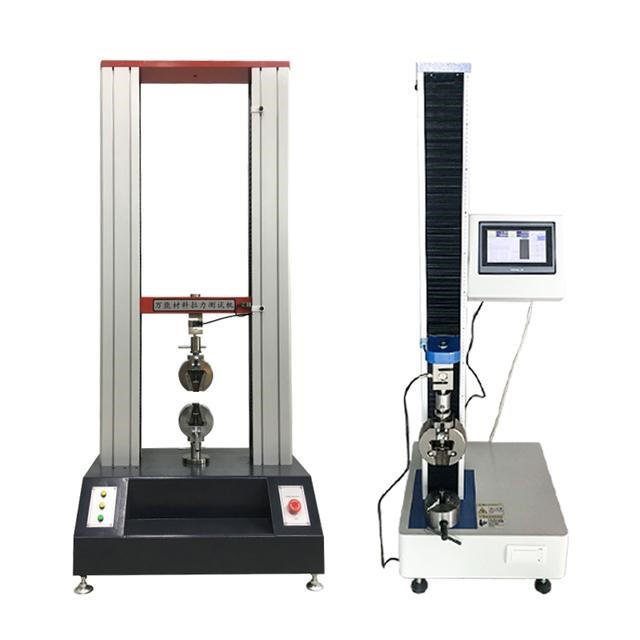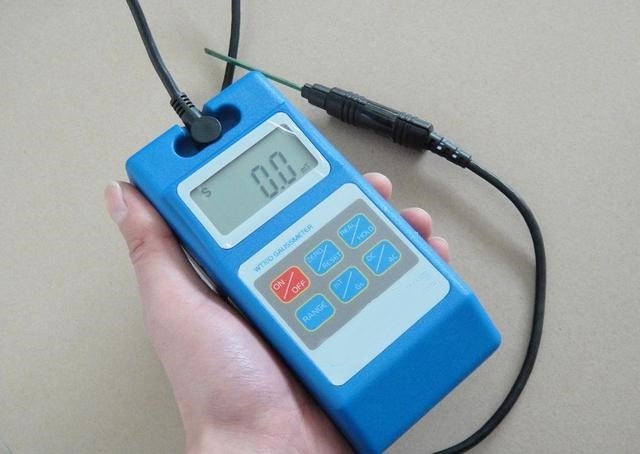How to Measure the Strength of NdFeB Strong Magnets?
The strength of a strong magnet is generally determined by its tensile force and magnetic field strength.
Generally, the strength of the magnet is indicated in the product parameter information of the magnet, and the magnet factory usually uses the following methods to identify it.
1. Pulling force
Tensile force is a measurement of the strength of a magnet. The pulling force of a magnet is measured in kilograms (kg) or newtons (N) by a pulling force tester.

Test tool: Pulling force tester
Using this instrument, the magnet is separated from a mild steel plate for direct contact and direct pulling force. The surface of the steel plate should be smooth and clean. The force of pulling out the magnet should be perpendicular to the surface.
The determining factor of the magnitude of the pulling force of a strong magnet is the strength of the magnetic field, not the size of the magnet. Compared with a small magnet, a large size magnet does not necessarily have a stronger pulling force than small size.
2. Magnetic Field Strength
The magnetic field strength of a strong magnet is measured by Gauss and Tesla, both of which measure the density of the magnetic field on the surface of a permanent magnet, also known as the magnetic induction of a magnet. Usually, to measure the strength of the magnetic field more accurately, we use a Gauss meter to measure it, 1 Tesla is equal to 10000 Gauss.

Measurement tool: Gaussmeter
The instrument for measuring the magnetic induction of permanent magnets is the Gaussmeter. Gauss meters work according to the Hall effect, which is where an electric current passes through and accumulates to make itself equal to the magnetic field, and this accumulation produces a readable voltage that can be detected by the Gauss meter. It should be noted that the Gauss meter of different countries or different brands may have errors in measurement.
How to use a neodymium magnet safely?
Neodymium magnets are very strong in magnetism. It must be handled carefully to avoid personal injury or magnet damage.
1, the strong attraction can cause serious injury.
Neodymium magnets are more powerful than other kinds of magnets. The incredibly strong forces between magnets often surprise those unfamiliar with their power. Fingers and other body parts can be sandwiched between two magnets. With larger magnets, this type of injury can be severe.
2, neodymium magnets are not suitable for children.
Neodymium magnets are not toys. Children should not be allowed to touch neodymium magnets. Small magnets may cause a choking hazard. If multiple magnets are swallowed, they can be connected to each other through the intestinal wall. This can lead to serious health risks and, if correctly diagnosed, requires immediate emergency surgery.
3, Neodymium magnets can affect pacemakers.
Strong magnetic fields near neodymium magnets can affect pacemakers, ICDs, and other implantable medical devices. Many of these devices have the ability to be deactivated by magnetic fields. Therefore, care must be taken to avoid the inadvertent deactivation of such devices.
4, Neodymium magnets are fragile and brittle.
Neodymium magnets are made of hard and brittle materials. Although they are made of metal and their nickel plating has a shiny metallic appearance, they are not as durable as steel. Neodymium magnets may flake, chip, break or shatter if allowed to bang together. Goggles should be worn when handling magnets, as broken magnets will fire small pieces at a very high rate. Neodymium magnets are not easily drilled or machined.
5, Magnets can affect magnetic media.
Strong magnetic fields near neodymium magnets can damage magnetic media, such as floppy disks, credit cards, magnetic ID cards, cassettes, videotapes, or other such devices. They can also damage televisions, VCRs, computer monitors, and CRT monitors. Avoid placing neodymium magnets near electronic devices.
6, Neodymium magnets will demagnetize at high temperatures.
Although the operating temperature is usually listed as 80°C (175°F), the actual maximum operating temperature of magnets may vary depending on the grade, magnet shape, and usage.
7, Neodymium magnet powder or dust is flammable.
Avoid drilling or machining neodymium magnets. When ground into dust or powder, this material is highly flammable.
8, People who are allergic to nickel should avoid prolonged contact with magnets.
A small percentage of people are allergic to nickel and the allergic reaction can cause redness and rash. People who are allergic to nickel should avoid direct contact with nickel-plated neodymium magnets.
9, Strong magnetic field can interfere with the compass and navigation.
Magnetic fields can affect compasses or magnetometers used in air transport. They can also affect the internal compasses of smartphones and GPS devices.